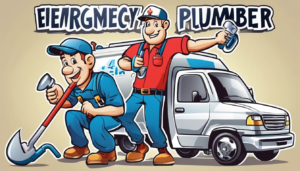
If you’re a Phoenix homeowner with a garage door that’s malfunctioning, it’s essential to diagnose the issue promptly to avoid further damage and potential safety hazards. You’ll start by inspecting the door and its components for signs of wear or damage. Check for unusual noises, uneven movement, and gaps or cracks in the door or walls. But where do you go from there? As you begin to identify potential problems, you might find yourself faced with questions about how to address them effectively – and that’s where a clear understanding of common garage door issues comes in. garage door spring replacement in Phoenix.
Common Signs of Garage Issues
Commonly, you’re likely to notice issues with your garage door before they become major problems. You might notice that your garage door is making unusual noises, such as creaking, grinding, or squeaking sounds.
These noises often indicate worn-out or loose parts, like rollers or hinges, that need to be lubricated or replaced.
Another common sign is uneven or slow door movement. If your garage door is tilting to one side or taking more time than usual to open or close, it could be a sign of a broken spring, damaged tracks, or misaligned rollers.
You should also check for gaps or cracks in the door or walls, as these can let in water, heat, or pests.
Additionally, look for signs of wear on your garage door’s cables, springs, and rollers.
Frayed cables or broken springs can cause serious safety hazards, so it’s essential to address these issues promptly.
Troubleshooting Garage Door Openers
When your garage door opener malfunctions, it can be frustrating and inconvenient. To troubleshoot the issue, start by checking the power source and ensuring the opener is receiving electricity.
If it’s not receiving power, check your circuit breaker or fuse box to see if the breaker has tripped or a fuse has blown.
Next, inspect the remote control or wall switch to ensure they’re functioning properly. Try replacing the batteries in your remote control or checking for loose connections on the wall switch.
If the issue persists, check the garage door opener’s sensor for any blockages or misalignments. Make sure the sensor is clean and aligned properly.
If none of these steps resolve the issue, check the garage door opener’s belt or chain for signs of wear or damage. If you find any damage, consider replacing the belt or chain.
Additionally, check the garage door opener’s limit settings to ensure they’re properly set. If the opener is still not working, it may be time to consult a professional for further assistance.
Fixing Broken Garage Door Springs
A broken garage door spring can leave your garage door stuck, making it difficult to access your car or storage space.
When you notice your garage door isn’t opening or closing properly, check the springs for any signs of damage or wear. If you find a broken spring, it’s essential to replace it immediately to avoid further damage or safety hazards.
Before starting the replacement process, ensure you purchase the correct type and size of spring for your garage door.
It’s also crucial to disconnect the power to the garage door opener and engage the emergency release mechanism to avoid accidents.
To replace the spring, start by removing the old spring, taking note of its orientation and positioning.
Next, install the new spring, ensuring it’s properly seated and secured.
Once the new spring is in place, reconnect the power and test the garage door to ensure it’s working smoothly.
If you’re not comfortable with this process, consider hiring a professional garage door technician in Phoenix to handle the replacement for you.
Dealing With Warped Garage Panels
Warped garage panels can cause significant issues with your garage door’s operation and overall appearance. You may notice gaps between the panels or uneven movement when you open or close the door. Warped panels can also lead to increased energy bills due to heat escaping through the gaps.
To deal with warped garage panels, you’ll need to inspect the damage first. Check the panels for any signs of wear, such as cracks or breaks.
If the damage is minor, you can try to straighten the panel yourself using a combination of heat and gentle pressure. However, if the damage is extensive or you’re not comfortable with DIY repairs, it’s best to consult a professional garage door technician.
When repairing warped panels, make sure to use the correct materials and techniques to avoid further damage. If the panel is beyond repair, you may need to replace it entirely.
It’s also essential to identify the cause of the warping, such as water damage or excessive heat, to prevent it from happening again in the future. Regular maintenance can help prevent warped panels and ensure your garage door operates smoothly.
Maintaining Garage Door Tracks
Maintaining Garage Door Tracks
How well do your garage door tracks support the weight and movement of your door? Over time, tracks can become damaged or misaligned, causing your garage door to malfunction or make noise.
To prevent this, inspect your tracks regularly for signs of wear, such as dents or rust. Clean the tracks with a cloth and lubricate them with silicone spray to keep them running smoothly.
Make sure the tracks are securely attached to the wall and the garage door frame. If you notice any loose screws or bolts, tighten them immediately.
Also, check for any blockages or debris that may be obstructing the tracks. If you find any, remove them promptly.
If you notice that your tracks are severely damaged or bent, consider replacing them. You can purchase replacement tracks at a hardware store or home improvement store. If you’re not comfortable with the replacement process, consider hiring a professional garage door technician.
Regular maintenance of your garage door tracks can help prevent costly repairs and ensure your garage door operates smoothly and safely.
Conclusion
You’ve now got the know-how to tackle common garage door issues in Phoenix. By inspecting your door and its components, troubleshooting the opener, and addressing problems with springs, panels, and tracks, you can resolve issues quickly and safely. Remember to stay vigilant for signs of wear and tear, and don’t hesitate to seek professional help if you’re unsure or uncomfortable with any repairs.







